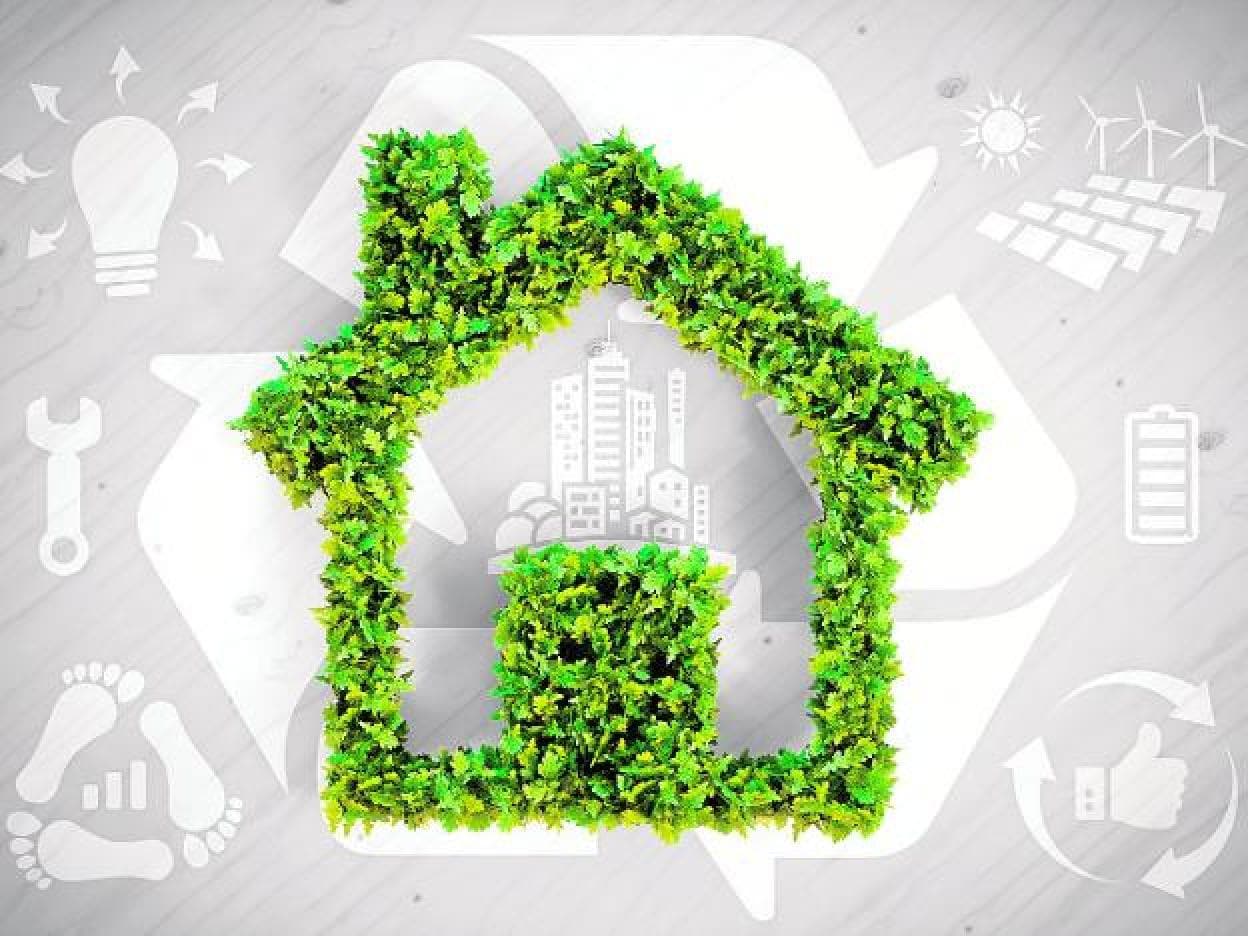Mortgages go green
Property loans on offer at preferential rates for those who buy energy-efficient homes
ARANTXA HERRANZ
Friday, 25 February 2022, 18:33
The definition of a green mortgage is simple: a bank offers purchasers preferential conditions, such as a lower interest rate or a larger loan, if they can prove that the home they want to buy fulfils certain environmental standards.
According to data from the Ministry for Ecological Transition and Demographic Challenge, buildings represent 40 per cent of final energy consumption of the EU. In Spain, more than half of buildings were constructed before 1980 and approximately 21 per cent are more than 50 years old. This means that six out of every ten were built before the first regulations were introduced regarding energy efficiency in new constructions.
Now, new regulations are coming into effect and the Institute for Energy Diversification and Saving (IDAE) is able to approve financing for energy renovations in buildings.
Green mortgages are not only available to buy a property, but also to cover the costs of works to improve energy efficiency in existing homes. This cost can be added to the mortgage taken out to buy a property or incorporated into an existing mortgage.
Supporters of these green loans say it means that home owners are able to meet the cost of these improvements, and that is important because they tend to be expensive, but can save money in the long term: double-glazed windows, solar-powered hot water, high-efficiency heating/air conditioning, new insulation... measures such as these will mean that homes consume less energy, with the subsequent financial savings and reduced environmental impact.
Some banks nowadays are reducing mortgage interest rates by up to one per cent if the property in question has a type A energy certificate to show that it consumes as little energy as possible. Loans are also available at advantageous rates in some cases if the client proves that the money is for energy improvements in their home.
How did these come about?
The idea of green mortgages came about during the Build Upon project, which initially sought to help governments in Europe to establish strategies to renew existing buildings in their countries.
The European Mortgage Federation (EMF) and other entities designed a road map for green mortgages in the EU as part of the EeMAP initiative.
For the banks, granting a green mortgage reduces the risk of non-payment. According to the World Green Building Council, there is clear evidence that ecological buildings (and their occupants) are a lower-risk investment for the banks, not because the buildings are more expensive and therefore accessible only to those with a certain level of income, but because less money has to be spent on maintaining them (heating and air conditioning, for example).
Because outgoings are lower, the client has more money available to repay their loan, so the risk of non-payment is lower.
Apart from this, ecological buildings have a higher value in comparison with others, because the market is increasingly less interested in those which do not fulfill minimum sustainability criteria and they are a safer option should any unforeseen event occur.
According to the WorldGBC organisation, these two factors will only increase over time, and this is an especially important consideration because mortgages are normally for a 25 or 30 year term.
New wave of urban renewal
The European Commission recently put into effect the so-called Renovation Wave, a strategy with which it wants to update 35 million buildings between now and 2030.
The renovation of the building stock in the EU (together with the decarbonisation of the transport sector and making cities more ecological) is one of the top priorities under the Green Pact, not only due to its potential to reduce energy consumption and CO2 emissions, but also to drive sustainable growth and create employment (it is calculated that the construction sector generates the highest number of jobs per one million euros invested).
As well as assistance of the type offered by the IDAE, this new type of mortgage loan could help the EU's target to be met. Nevertheless, to prevent unscrupulous operators taking advantage of the new green mortgage system the Energy Efficient Mortgage Loan (EEML) has been created so that consumers, lenders and investors can be confident in identifying energy efficient mortgages in the portfolios of credit institutions.
It should also be pointed out that, in Europe alone, the money which is still owed to banks for mortgage loans is equivalent to 44 per cent of the GDP of the European Union.
